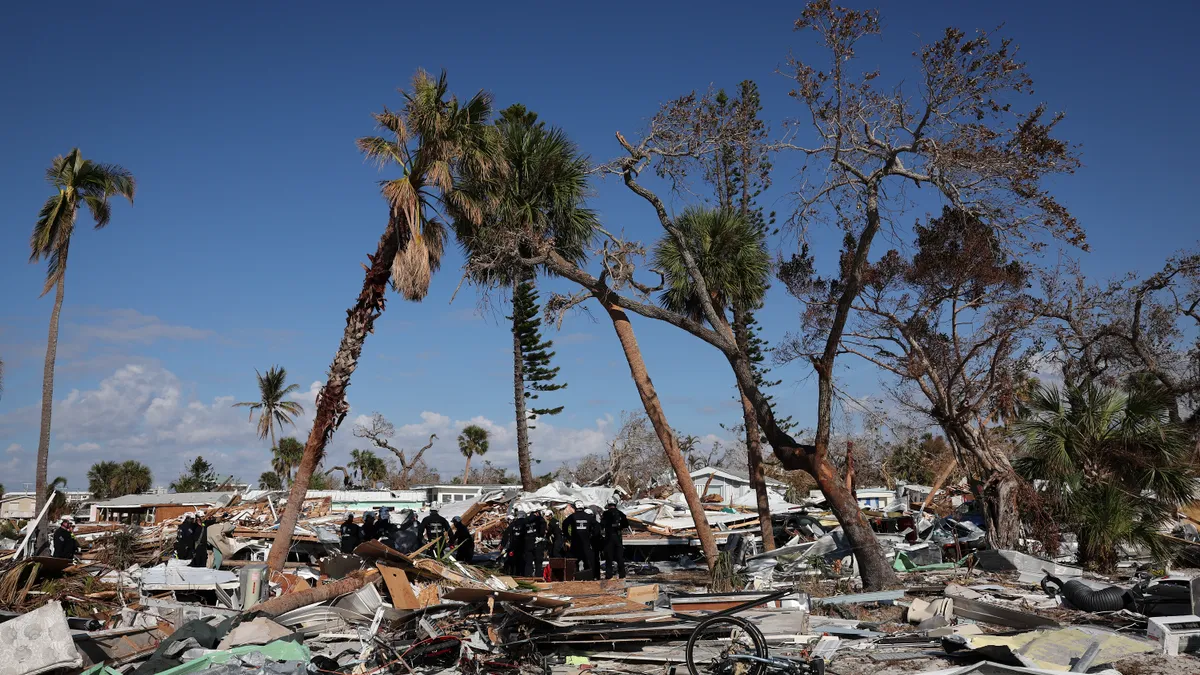The 2022-23 school year was going to be a relatively normal one. Staff were back in-person after the COVID-19 pandemic brought on building closures, students were easing back into regular schedules after a stretch of sporadic remote learning in many places, and the masks had finally come off.
Just a few weeks into the school year, however, schools in the Southeast are finding themselves dealing with fallout from another storm.
Hurricane Ian — which weather experts are calling the deadliest hurricane to strike Florida in recent years— shuttered school buildings across the state, and some aren't planning to open their doors until at least Oct. 10, according to the Florida Department of Education. Other states in the storm's path, including Georgia and South Carolina, also took time off out of precaution.
"This school year, we really were off to a great start," said Debra Pace, superintendent of Florida's Osceola County School District, where lakes have been flooded due to rising water levels in the storm's aftermath. "So this interruption certainly concerns me about getting our movement, our traction, back. But everybody's committed to doing that."
Schools assess damage
In Lee County, Florida, initial assessments of building damage show that just about half of its schools have experienced low impact, meaning they may need debris clearing, restored power and water, and cleaning, said Lee County Superintendent Christopher Bernier.
The remaining schools fall into medium and high levels of damage, which have more significant issues like partial roof damage or are temporarily inoperational and may need to be rebuilt. Lee County is where the storm first hit the United States last week and left some of the highest death tolls in its wake.
In addition to checking up on buildings, the district is busy checking in with students, staff and their families.
"This is a people business," Bernier said. "We need to make sure that we have reached out."
On Tuesday, Lee County School District, which employs approximately 13,000 people, was wrapping up check-ins with all of its teachers and has set up a 211 toll-free hotline for teachers without connectivity to help the district assess their needs. The district planned to do the same for its students, which totaled about 100,000 right before the storm.
In Osceola, where roads have become inaccessible for buses, Pace and social workers spent the past few days visiting shelters and assessing students' needs in schools. Pace's primary concern is housing, which she said is not readily available in her area.
"These are some of our most challenged families already dealing with this loss," Pace said. "And now [they have] nowhere to sleep."
Schools provide food and shelter
In other places, schools themselves have become shelters. Haines City High School in Polk County, for example, housed 262 people for 48 hours last week starting last Tuesday, according to Principal Adam Lane. Lane also ran the shelter.
The school welcomed and fed the broader community who sought shelter, including many students, staff, their families and pets from dogs to tortoises. Staff who worked during the storm to help run the shelter will be partially compensated by the Federal Emergency Management Agency, said Lane, who will be logging his staff's hours to FEMA.
"I think anytime you have natural disaster events, it brings a staff and a community together," Lane said. "I think it's a chance to really see how people can come together and battle the storm."
Bernier is working on larger-scale food distribution and is setting up food distribution sites, including in the central office, for the community at large in Lee County. His district has also partnered with the Red Cross, United Way, Goodwill, Salvation Army and even the Miami Dolphins, which agreed to hire a company to cook for families for at least two weeks.
In Osceola, Pace's team is providing backpacks with school supplies and school uniform clothing, and hopes to allocate gift cards for grocery stores or gas to families in transition.
The county has also applied for federal assistance that would put individuals in temporary shelters and local hotels, which the district is hoping will be approved. "Because that would obviously be much better than sleeping on the floor of an arena, or even on a cot in an arena," Pace said.
Flexibility from schools on the horizon
While many of Florida's schools will be reopening to some extent this week, fallout from the storm and schools' resulting flexibilities and accommodations will be ongoing.
Osceola, for example, is helping teachers who have lost everything to the storm secure housing. The district is encouraging them to take advantage of a school board policy that provides up to 10 days of natural disaster relief in addition to sick and vacation leaves.
For its high schoolers, Lee County plans to set up sites in its central office and functional school buildings to help its seniors. Some of these students may not otherwise have connectivity and need to meet college application deadlines. How the district will get the rest of its students back in the classroom, however, is a later decision, Bernier said.
"Options are currently on the table," Bernier said. "But no final decisions have been made. We still have a lot of work to do prior to our schools reopening."


















